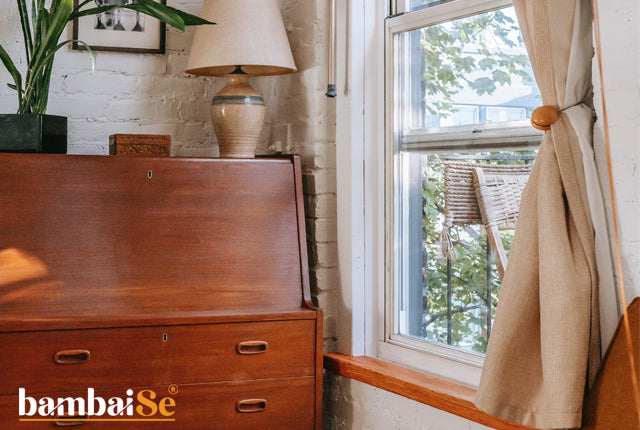Your home is a reflection of your personality and style. It's where you relax, entertain, and make memories. One of the most important aspects of home decor is choosing the right color palette. The colors you choose can set the mood, create harmony, and enhance the overall aesthetic of your space. But how do you go about selecting the perfect color scheme for your home? Let's break it down into a simple step-by-step guide.
Step 1: Assess Your Space
Before you start picking colors, take a good look at your space. Consider the size of the room, the amount of natural light it receives, and its overall architecture. Smaller rooms may benefit from lighter colors to make them appear more spacious, while larger rooms can handle deeper, richer hues.
Eg: Imagine you have a small bedroom with limited natural light. In this case, you might opt for light and airy colors like soft blues, pale yellows, or light grays to make the room feel more open and inviting.
Step 2: Define Your Style
Your personal style plays a big role in choosing the right colors. Are you drawn to a modern, minimalist look, or do you prefer a cozy, traditional feel? Identifying your style will help you narrow down your color options.
If you have a preference for modern design, you may gravitate toward a color palette of neutral tones like white, gray, and black with occasional pops of bold colors. On the other hand, if you love a cozy, traditional look, you might choose warm colors like deep reds, earthy browns, and rich greens.
Step 3: Inspiration Hunt
Gather inspiration from magazines, websites, or even nature. Take note of color combinations that catch your eye. Pinterest is an excellent platform for creating mood boards filled with color ideas. This step will help you visualize how different colors work together.
Eg: Let's say you find inspiration in a beach vacation photo featuring a serene blue ocean, golden sandy beaches, and crisp white sails. This could inspire a color palette of soft blues, sandy beiges, and crisp whites for your living room.

Step 4: The 60-30-10 Rule
A simple rule to maintain balance in your color palette is the 60-30-10 rule. Choose a dominant color (60%), a secondary color (30%), and an accent color (10%). This ensures your space isn't overwhelmed with one color.
Eg: Imagine you're decorating your dining room. You choose a dominant color, like a soft gray for the walls (60%), complemented by a secondary color like navy blue for the dining chairs and table (30%), and accent the room with gold accessories like candle holders and artwork frames (10%).

Step 5: Consider the Mood
Colors have the power to evoke emotions. Cool colors like blues and greens create a calm and relaxed atmosphere, while warm colors like reds and yellows bring energy and vibrancy. Think about the mood you want to set in each room.
Eg: If you want to create a calming atmosphere in your bedroom, you might opt for a soft, cool color palette with light blues and pale greens. This choice will evoke feelings of relaxation and serenity.

Step 6: Test Paint Samples
Never underestimate the importance of paint samples. Paint a small section of your wall with the colors you're considering. This will allow you to see how they look in your specific lighting and environment.
Eg: Before painting your living room, you purchase small paint samples of the colors you're considering. You apply these samples to a section of your wall and observe how they appear at different times of the day under varying lighting conditions.
Step 7: Coordinate Across Spaces
If your home has an open floor plan, it's essential to coordinate colors across spaces. Use a consistent color or color palette to create a seamless flow from one area to another.
Eg: In an open-plan kitchen and living area, you use a consistent color scheme. For example, if you choose a warm, earthy palette with terracotta accents for your kitchen, you carry over similar colors into the adjoining living space for cohesion.
Step 8: Neutrals as a Base
Neutrals, like whites, grays, and beige, make excellent base colors. They provide a clean canvas and work well with almost any accent color. You can add pops of color through furniture, accessories, and artwork.
Eg: In your kitchen, you start with a neutral base using white cabinetry and light gray countertops. This provides a clean and timeless backdrop, allowing you to introduce color through colorful dishes, kitchen accessories, and fresh flowers.

Step 9: The Power of Texture
Don't forget about texture. Mixing different textures within your color scheme can add depth and interest to your decor. Think about incorporating textured fabrics, rugs, or wall treatments.
Eg: In your cozy reading corner, you layer textures. You have a soft, textured rug underfoot, a knitted throw blanket draped over your chair, and a mix of decorative pillows with different fabrics like velvet, linen, and faux fur. These textures add depth and visual interest.
Step 10: Trust Your Instincts
Ultimately, trust your instincts. If a particular color speaks to you and makes you feel good, it's likely the right choice for your home. After all, your home should reflect your personality and make you happy.
Eg: You're drawn to a deep emerald green for your home office, even though it's not a traditional choice. Trusting your instincts, you use emerald for an accent wall and balance it with white shelving, natural wood furniture, and gold accents. It becomes a unique and inspiring space that truly reflects your personality.

Conclusion:
Choosing the right color palette for your home is a creative and personal process. It's about finding a balance between your style, the mood you want to create, and the practical aspects of your space. By following these simple steps, you'll be well on your way to creating a beautiful and harmonious home that you'll love for years to come. So, get inspired, experiment with colors, and make your home uniquely yours!





Leave a comment
This site is protected by hCaptcha and the hCaptcha Privacy Policy and Terms of Service apply.